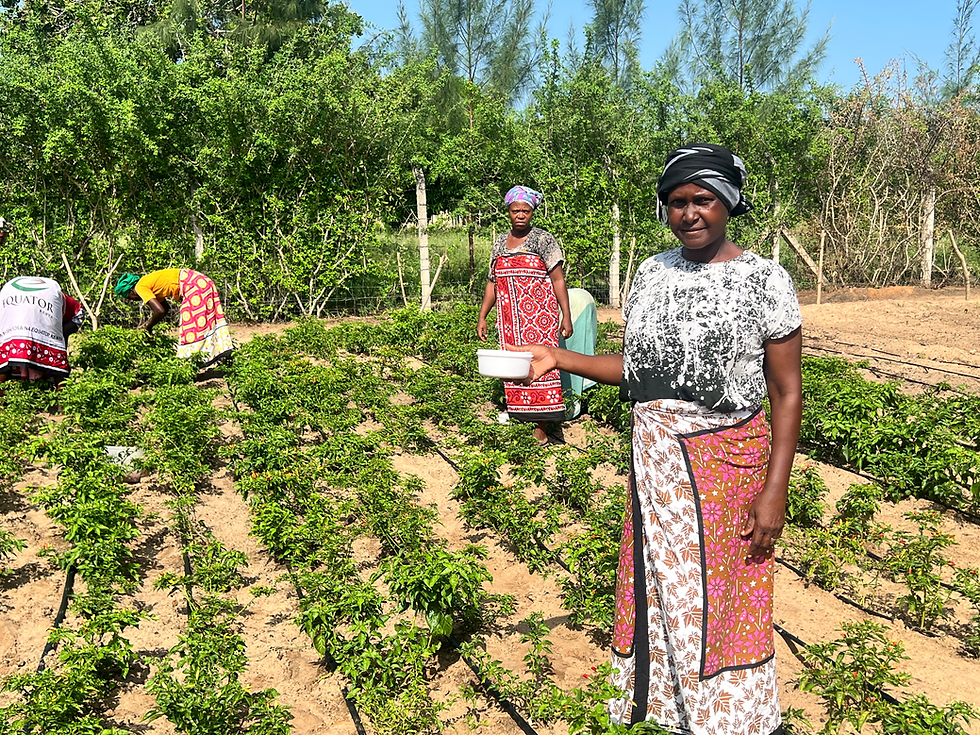Enhancing Cotton Productivity in Lamu County
- Louisa Ssennyonga

- Sep 4
- 2 min read

Kenya’s cotton industry is poised for a revival—and Lamu County is at the heart of this transformation. Despite the country’s potential, over 90% of cotton used in Kenya is imported. This heavy reliance on foreign imports has stifled local production and limited economic opportunities for smallholder farmers.To change this, the UK Government’s Sustainable Urban Economic Development (SUED) programme is partnering with the Government of Kenya, Lamu County, and Thika Cloth Mills (TCM) to establish a state-of-the-art cotton processing facility in Lamu. This initiative is set to boost local cotton productivity, create jobs, and empower communities—especially women.
A Strategic Investment in Local Growth
The new cotton ginnery, whose construction begins immediately and is expected to be completed by November 2025, is a result of a four-way collaboration between:
The UK Government (providing seed funding to de-risk the investment
The Government of Kenya (through Kenya Development Corporation
Lamu County Government (providing land and an enabling environment
Thika Cloth Mills (private sector investor and operator)
This facility will directly support Kenya’s national textiles and garments development agenda by reducing import dependency and building a homegrown cotton economy.
British Deputy High Commissioner to Kenya, Ed Barnett, said: “This partnership will reduce reliance on imports, put money in the pockets of farmers, and support a sustainable homegrown cotton industry in Kenya. Long live Kenya kanga!”
Boosting Cotton Production and Farmer Incomes
Currently, Lamu produces around 2,000 bales of cotton annually. With the new facility, this is expected to triple to 6,000 bales within three years. The ginnery will process;
800 metric tons of lint in its first year,
2,000 metric tons annually by year three
The facility will source cotton from Lamu and neighboring counties—Kilifi, Tana River, Kwale, and Taita Taveta—creating a regional hub that reduces transportation costs and increases market access for farmers. The project aims to grow the number of cotton farmers in Lamu from 5,000 to 15,000 by 2027, supported by extension services and training.
Climate-Smart and Sustainable
The facility is designed with sustainability at its core:
Solar energy will power operations, reducing reliance on the national grid.
262 metric tons of CO₂ emissions will be avoided annually by reducing long-distance cotton transport.
Cottonseed oil extraction and animal feed production from cottonseed cake will diversify income streams and reduce waste.
Empowering Women and Promoting Equality
The facility is expected to employ at least 50% women, creating inclusive economic opportunities and promoting gender equality in the cotton value chain. This aligns with SUED’s broader mission to ensure that women are not just participants—but leaders—in agricultural transformation.
Digital Efficiency for Modern Farming
A digital platform will be introduced to streamline communication between farmers and the facility. This innovation will:
Improve coordination and transparency
Optimize resource allocation
Increase crop yields through timely agronomic advice
Unlocking Export Potential
Processed lint will be used by TCM’s textile plant in Thika, with surplus sold to local manufacturers like Rivatex and Sunflag, and exported to high-demand markets such as India, China, and Vietnam. The proximity to Lamu Port will enhance export logistics and regional trade.




Comments